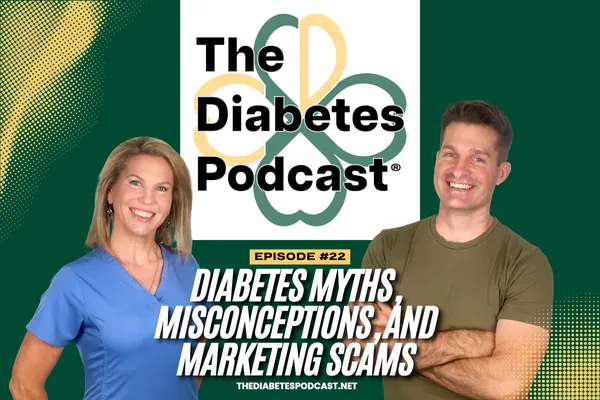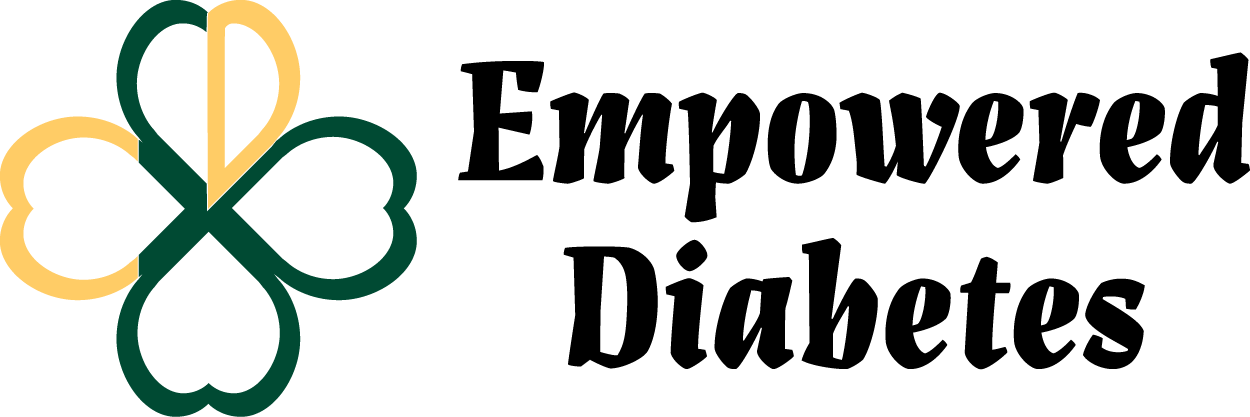
EP021 - The Diabetes / Salt Connection
The Diabetes–Salt Connection: A Simple Low Sodium Diet Plan Menu That Protects Your Heart, Brain, and Kidneys
“More than 70% of our sodium doesn’t come from the salt shaker—it comes from processed and restaurant foods.”
Welcome to The Diabetes Podcast Blog. Today we’re talking about something that hides in plain sight: sodium. It’s in bread, soup, pizza, deli meats, fast food, and restaurant meals. If you live with type 2 diabetes, sodium is more than taste—it’s tied to blood pressure, heart attacks, stroke, and kidney damage.
Good news: you don’t have to give up all your favorite foods to make a real difference. Small, smart changes add up. Let’s break this down in plain, friendly language, and end with an easy low sodium diet plan menu you can start this week.
Why Sodium Matters More With Diabetes
Sodium raises blood pressure.
High blood pressure is about twice as common in people with diabetes.
Diabetes plus high blood pressure greatly increases the risk of stroke, heart attack, heart failure, and kidney disease.
The kidneys work hard to balance sodium. Diabetes already puts them at risk. Extra sodium adds strain.
Key Numbers You Should Know
Ideal goal for many adults (especially with diabetes): 1,500 mg sodium per day.
Upper limit: 2,300 mg per day.
Average American intake: about 3,400 mg per day.
Even cutting 500–1,000 mg per day lowers risk.
Where Most Sodium Comes From
It’s not mainly the salt shaker. Over 70% of sodium comes from:
Processed foods (bread, rolls, canned soups)
Deli meats and cured meats
Pizza
Fast food and restaurant meals
Sauces, dressings, marinades
Sneaky High-Sodium Foods
Bread and rolls: don’t taste salty, but they add up fast.
Cold cuts and cured meats: big sodium source and health risk.
Pizza: cheese + sauce + crust = a sodium bomb.
Canned soups: a single can can hit 1,200–1,500 mg.
Fast food meals: often a full day’s sodium in one sitting.
What The Research Says
High sodium intake is linked with more major cardiovascular events (heart attack, stroke, heart failure).
Diabetes increases the risk of congestive heart failure 2–5 times.
In one analysis, sodium above about 2,000 mg/day was tied to an estimated 1.65 million cardiovascular deaths worldwide in a single year.
Practical takeaway: lower is better. There’s no strong evidence that reasonable, lower targets are harmful.
Real-Life Risks, In Simple Terms
Stroke can strike fast: arm weakness, slurred speech, vision changes. Minutes matter.
Heart attacks and heart failure can lower your heart’s “ejection fraction,” leaving you more tired with lower quality of life.
Kidney damage can lead to dialysis several times a week. That reshapes retirement and daily life.
Six Steps To Cut Sodium Without Misery
Try the DASH Approach
DASH = Dietary Approaches to Stop Hypertension.
Focus on: fruits, vegetables, beans, whole grains, fish, poultry, low-fat dairy, nuts, seeds.
Keep foods minimally processed.
Big flavor from herbs, garlic, lemon, vinegar—without adding salt.
Similar to Mediterranean, but with an even stronger focus on lowering sodium.
Become a Label Detective
Look for “Low Sodium” items: 140 mg or less per serving.
Check serving sizes. Two or three servings add up.
Swap canned beans for “no salt added” beans.
Pick fresh poultry and fish instead of deli meats.
Choose low sodium broths, sauces, and marinades—measure your portions.
Eat More Plants (And Potassium)
Plants are naturally low in sodium and often high in potassium.
Potassium helps relax blood vessels and balances sodium.
Great picks: spinach, beans, bananas, sweet potatoes, tomatoes, oranges.
Beans are star players: heart-healthy, filling, flexible, and low sodium when cooked without salt.
Smarter Restaurant Habits
Ask for sauces and dressings on the side. Dip your fork, then the food.
Choose grilled, baked, or steamed instead of fried or breaded.
Skip or limit the bread basket and salty appetizers.
Look up nutrition info online before you go. Pick meals under 700–800 mg sodium when possible.
Ask for “no added salt” during cooking when you can.
Track and Replace: One-Week Sodium Check
Keep a simple sodium diary for 7 days.
Circle your top sodium sources.
Replace high-sodium items with low-sodium swaps:
Regular canned soup → low sodium or homemade
Deli meats → sliced roast chicken/turkey you cook yourself
Regular bread → lower sodium bread or use lettuce wraps
Bottled dressing → balsamic vinegar + olive oil + herbs
Partner With Your Doctor
If you’re on blood pressure meds, tell your doctor you’re lowering sodium and improving diet.
Get an at-home blood pressure cuff and log readings.
Share your log. If your readings drop, your doctor may safely reduce medication.
Goal: safer numbers with fewer meds, when appropriate.
Pro Tip: Dried Beans = Big Sodium Savings
Canned beans (even rinsed) add sodium fast.
Cooking dried beans (no salt) cuts sodium by a lot and tastes the same in most recipes.
Easy Instant Pot method:
Rinse dry beans.
Add to pot, cover with 1–1.5 inches of water.
Cook on high pressure for about 50 minutes; natural release.
Store for the week. Season later in each dish, not in the pot.
Beans blend into soups, bowls, salads, tacos, and even smoothies for fiber and fullness.
Flavor Without Salt
Fresh/dried herbs: rosemary, thyme, oregano, basil, dill, cilantro
Spices: paprika, smoked paprika, cumin, chili powder, turmeric
Aromatics: garlic powder, onion powder (not garlic salt/onion salt)
Acids: lemon juice, lime juice, vinegars (balsamic, red wine, apple cider)
Umami: salt-free tomato paste, nutritional yeast, mushrooms
Your Simple Low Sodium Diet Plan Menu (Sample 3-Day)
Target: ~1,500–2,000 mg sodium/day. Portions can be adjusted.
Day 1
Breakfast: Plain Greek yogurt, sliced banana, cinnamon, handful of unsalted walnuts. Side of berries.
Snack: Apple + 2 tbsp natural peanut butter (no salt added if possible).
Lunch: Big salad: mixed greens, cherry tomatoes, cucumber, chickpeas (no salt added), avocado, balsamic vinegar + olive oil, black pepper. Small slice of lower-sodium whole grain bread or a lettuce wrap.
Snack: Carrot sticks + hummus (look for low sodium or make your own).
Dinner: Grilled salmon or baked tofu, quinoa, steamed broccoli with lemon and garlic. Optional: drizzle of olive oil.
Day 2
Breakfast: Oatmeal cooked with water/milk, topped with blueberries, chia seeds, and a dash of cinnamon.
Snack: Pear + a small handful of unsalted almonds.
Lunch: Lentil and veggie soup (homemade, no added salt) with a side salad and vinegar-based dressing.
Snack: Unsalted popcorn seasoned with paprika and garlic powder.
Dinner: Burrito bowl: brown rice, black beans (no salt added), sautéed peppers/onions, corn, salsa (check sodium), cilantro, lime, and a spoon of plain Greek yogurt.
Day 3
Breakfast: Smoothie: spinach, frozen berries, half a banana, cooked no-salt white beans, water or unsweetened almond milk.
Snack: Cottage cheese (find a lower-sodium option) with pineapple chunks.
Lunch: Whole grain wrap or lettuce wrap with sliced roast chicken you cooked yourself, tomato, cucumber, avocado, and mustard (light). Side of fruit.
Snack: Sliced bell peppers with guacamole.
Dinner: Whole wheat pasta tossed with olive oil, cherry tomatoes, mushrooms, spinach, garlic, and basil. Side salad with balsamic vinegar.
Note: Always check labels—brands vary a lot in sodium.
Quick Wins You Can Start Today
Swap regular canned beans for no-salt beans or home-cooked beans.
Choose low sodium soup or make your own.
Measure salad dressing (or use vinegar + oil).
Cut fast food trips in half this week.
Add a half cup of beans daily to “displace” higher-sodium foods.
FAQs
Do I need to hit exactly 1,500 mg? No. Lowering by 500–1,000 mg/day still helps.
Can I use salt substitutes? Ask your doctor, especially if you take certain meds or have kidney issues (many substitutes contain potassium chloride).
Is sea salt better? Sea salt, pink salt, kosher salt—they all contain sodium. The body treats them the same.
Closing Encouragement
Sodium is not just about taste. For people with diabetes, it’s about life and long-term health. You are not powerless. Every meal is a chance to protect your heart, brain, and kidneys. Start small, be consistent, and involve your care team. Progress, not perfection. For additional information, contact us at [email protected].
Disclaimer
The information in this blog post and podcast is for educational and informational purposes only. It is not medical advice, diagnosis, or treatment, and it does not replace a one-on-one relationship with your physician or qualified healthcare professional. Always talk with your doctor, pharmacist, or care team before starting, stopping, or changing any medication, supplement, exercise plan, or nutrition plan—especially if you have diabetes, prediabetes, heart, liver, or kidney conditions, or take prescription drugs like metformin or insulin.
Results vary from person to person. Examples, statistics, or studies are shared to educate, not to promise outcomes. Any discussion of medications, dosing, or side effects is general in nature and may not be appropriate for your specific situation. Do not ignore professional medical advice or delay seeking it because of something you read or heard here. If you think you are experiencing an emergency or severe side effects (such as persistent vomiting, severe diarrhea, signs of dehydration, allergic reaction, or symptoms of lactic acidosis), call your local emergency number or seek urgent care right away.
We strive for accuracy, but health information changes over time. We make no guarantees regarding completeness, timeliness, or suitability of the content and assume no liability for actions taken or not taken based on this material. Use of this content is at your own risk.
Links or references to third-party resources are provided for convenience and do not constitute endorsement. By reading, listening, or using this information, you agree to these terms and understand that you are responsible for your own health decisions in partnership with your licensed healthcare provider.

